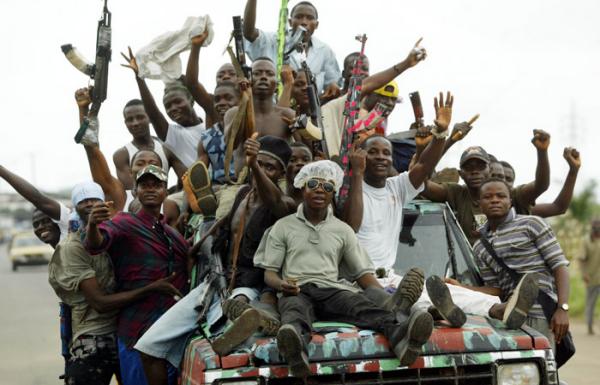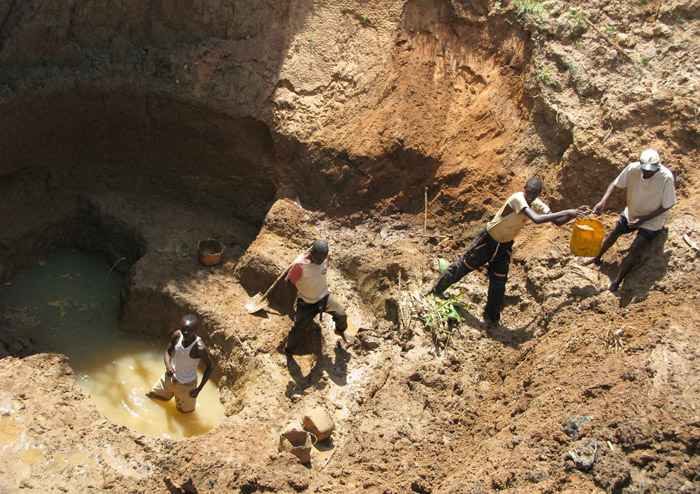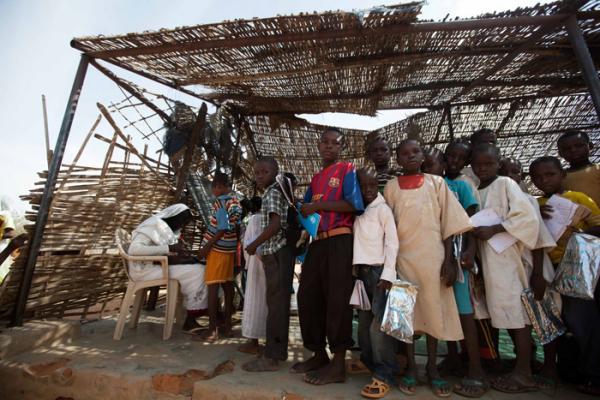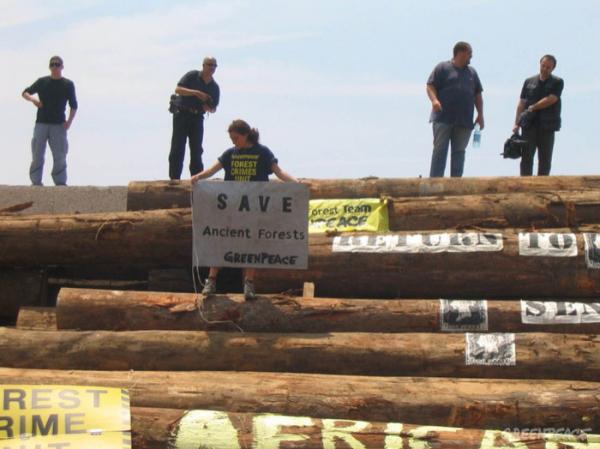
Natural resources are vital for our survival. But often, the competition for access to these resources spark off human conflicts leading to violence of the worst kind. A study done by the United Nations Environment Programme (UNEP) reveals that 40 per cent of all armed conflicts in the last six decades were linked to natural resources.
On the International Day for Preventing the Exploitation of the Environment in War and Armed Conflict, lets look at the major conflicts around natural resources across the world.
Diamonds, when placed in a ring serves as a symbol of love. But, when in the mine, this precious gem becomes a source of a bloody human conflict.
Diamonds that fuel civil wars are often called "blood" or "conflict" diamonds.
- During the 1990s, diamonds fueled the civil war in Angola, Africa, with terrible consequences.National Union for the Total Independence of Angola (UNITA), the second-largest political party in country, reportedly financed its military campaigns with diamonds.

RUF rebels in Sierra Leona. (Photo: Getty Images)
- For years the brutal group Revolutionary United Front (RUF) in Sierra Leona funded its rebellion with the help of smuggled diamonds. Tens of thousands have been killed and hundreds of thousands displaced. Similar conflicts have been reported across Liberia, Ivory Coast and the Democratic Republic of Congo.

Men dig for diamonds in a muddy pit near Mbuji Mayi, in the Democratic Republic of Congo on Wednesday, May 6, 2009.(Photo: Getty Images)
- Another dark side of diamond trade is that many diamond diggers thus end up in poverty. Thus they easily fall prey to rebel groups which recruit them in fighting ranks or to search for diamonds on their behalf to finance their war.
- Experts say between 10 to 15 per cent of diamonds produced around the world are conflict diamonds.
This "black gold" often brings misery to the societies where it is found.

Children displaced during the Sudanese conflict take class at the school of El Sereif camp for Internally Displaced Persons (IDP) in South Darfur (2014). (Photo: Getty Images)
- Major wars over oil have been fought since World War I. It has also been the reason of many smaller strifes across world. The struggle over energy resources has been a conspicuous factor in many conflicts, including the Iran-Iraq War of 1980-1988, the Gulf War of 1990-1991, and the Sudanese Civil War of 1983-2005 where an estimated two million people lost their lives.

File Photo: ISIS took over Syria's oil fields to fuel their rebellion.
- Now, most of Syria's oil fields are under the control of terror groups, including ISIS, the al-Qaeda-linked Nusra Front, and local Kurdish militias. It is well understood that without oil (or some other lucrative source of income), ISIS could never hope to accomplish its ambitious goals.
- Energy played a key role in Russia's annexation of Ukrainian territory Crimea. By this, Russia virtually doubled the offshore territory it controls in the Black Sea, which is thought to house billions of barrels of oil and vast reserves of natural gas.
- In Nigeria, the insurgent group Boko Haram is fighting to overthrow the existing political system. Although, their means of achieve their ends is completely deplorable, it is said that the rebellion is out of disgust for the government which has become wealthy, corrupt, and autocratic thanks to access to abundant oil revenues.
- As similar conflict has been witnessed between China and its neighbours Vietnam, Phillipines and the island of Borneo, around the oil and gas reserve in South China Sea.
It is said that the next big civil wars in the world will happen over water.According to an estimate made by the Global Policy forum, more than 50 countries on five continents might soon be caught up in water disputes.
- Some of the prominent water conflicts includes- the interstate conflicts in the Middle East,(disputes stemming from the Euphrates and Tigris Rivers among Turkey, Syria, and Iraq; and the Jordan River conflict among Israel, Lebanon, Jordan and the State of Palestine).
- Similarly, in Africa the Nile River-is a major cause of conflict among Egypt, Ethiopia, and Sudan. One cannot miss the mention of the Aral Sea conflict in Central Asia involving Kazakhstan, Uzbekistan, Turkmenistan, Tajikistan and Kyrgyzstan.
2000 Cochabamba protests in Bolivia
- A remarkable example of conflict over water is the 2000 Cochabamba protests, also known as the Cochabamba Water War, which were held in Bolivia.

File Photo: Indus Water Treaty being signed between Indian Prime Minister Jawaharlal Nehru and President of Pakistan Ayub Khan in 1960.
- India and Pakistan also locked their horns over the distribution of water from the Indus basin. The World Bank had to intervene and peace was brokered with the signing of the Indus Water Treaty in 1960.
Timber is a commodity that can be easily transformed into cash to perpetuate conflict. It is relatively simple to extract.

Green peace activists protest against illegal logging at a port in Italy.The timber at these ports comes from the rainforests of the Congo Basin in Central Africa. (Photo: Greenpeace)
- In several parts of Africa, timber has become synonymous to violent conflicts.In Liberia , civil war allowed powerful actors to take control of the timber industry, grant timber concessions to unscrupulous firms, and buy weapons with the proceeds. Indeed, some timber operators doubled as middlemen in arms deals and trade in "blood diamonds." Cameroon, Congo, Gabon and Ghana are also plagued by timber conflict.
- In Asia, major timber conflicts have been reported in Burma, Indonesia and Cambodia.
- According to the estimate of World Bank (2003), globally, illegal logging on public lands is estimated to result in annual losses of revenues and assets of more than US$10 000 million.



![BJP's Kapil Mishra recreates Shankar Mahadevan’s ‘Breathless’ song to highlight Delhi pollution [WATCH] BJP's Kapil Mishra recreates Shankar Mahadevan’s ‘Breathless’ song to highlight Delhi pollution [WATCH]](https://images.catchnews.com/upload/2022/11/03/kapil-mishra_240884_300x172.png)

![Anupam Kher shares pictures of his toned body on 67th birthday [MUST SEE] Anupam Kher shares pictures of his toned body on 67th birthday [MUST SEE]](https://images.catchnews.com/upload/2022/03/07/Anupam_kher_231145_300x172.jpg)






